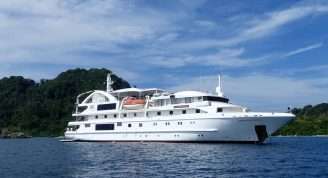Description
Voyage deep into the Southern Ocean and discover the World Heritage sub-Antarctic islands of Australia and New Zealand. These rugged and isolated islands provide a natural sanctuary for rare seabirds and marine mammals, thriving in a pristine and protected natural habitat. These thriving ocean havens are the last landfall before Antarctica. Explore Ulva Island’s tranquil forests and observe New Zealand’s most iconic birds. Venture to the untouched World Heritage areas of the Snares Island Group, Auckland Islands, Campbell Islands, and the renowned Macquarie Island wildlife reserve were rare flora including megaherbs, mosses and lichens flourish. Walk along rugged shorelines with expert guides and rangers amongst seals and penguins colonies that inhabit this untouched wilderness. Learn about the captivating history and pioneering heritage of early explorers, completing a truly unforgettable journey of exploration and discovery.
Due to prevailing weather and currents on the journey, the westward (Bluff to Melbourne) itinerary is extended to be a 15 night voyage. There is no additional charge for this extra sea day as it is essentially the same itinerary as the 14 night voyage and both will be priced the same.










